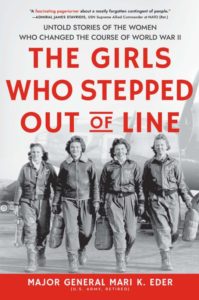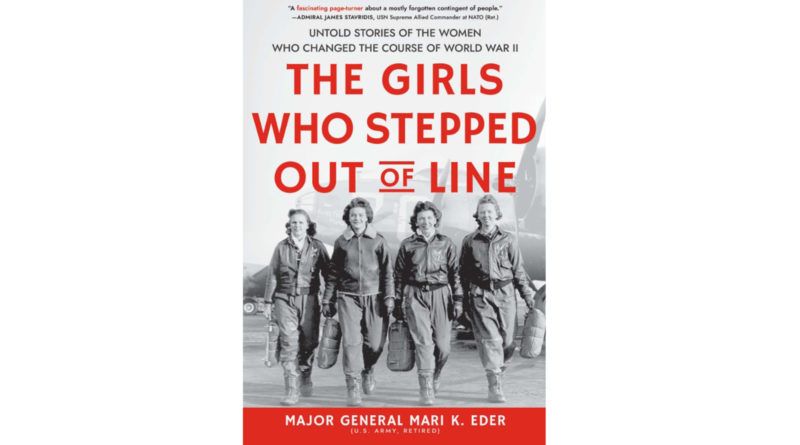Women Who Changed the World: Eder shares accomplishments of 15 WWII heroes
By M. CLARE HAEFNER | Cover photo courtesy of book publisher
 Spies. Resistance fighters. Rescuers. Journalists. Nurses. Advocates. Mapmakers. Throughout World War II, women did it all, but most of their contributions weren’t recognized at the time. Seventy years later, most people still don’t know their names or their stories. Retired U.S. Army Maj. Gen. Mari K. Eder aims to change that, introducing readers to 15 heroic women in The Girls Who Stepped Out of Line: Untold Stories of the Women Who Changed the Course of World War II (Sourcebooks, August 2021).
Spies. Resistance fighters. Rescuers. Journalists. Nurses. Advocates. Mapmakers. Throughout World War II, women did it all, but most of their contributions weren’t recognized at the time. Seventy years later, most people still don’t know their names or their stories. Retired U.S. Army Maj. Gen. Mari K. Eder aims to change that, introducing readers to 15 heroic women in The Girls Who Stepped Out of Line: Untold Stories of the Women Who Changed the Course of World War II (Sourcebooks, August 2021).
“Women who served in World War II did everything the men did, except fight in combat. By the war’s end, they were serving in every branch, doing every job but those on the front lines,” Eder writes.
From the first chapter, Eder had me hooked. Unlike many biographies I’ve read, The Girls Who Stepped Out of Line is full of action. Fast-paced, gripping narratives introduce each woman, sharing her own words and relating her acts of heroism during the war.
I’d heard of a few of the women before, but knew more about Alice Marble’s career as a tennis player than about her role as a spy. A real-life wonder woman, Marble fought for everything she accomplished, and once she found success, she used her renown to uplift other women.
Women like Hilda Eisen were unknown to me before Eder brought their stories to life. Eisen escaped from a ghetto, then from a Nazi cell, survived in a frigid Polish forest and escaped again to make a new life for herself in America as a successful businesswoman and philanthropist.
Capt. Stephanie Czech Radar and Virginia Hall were among the first women in the Office of Strategic Services, the precursor to the CIA. Their daring exploits make me wish their accomplishments had been more celebrated.
Perhaps the most interesting woman I learned more about was Ola Mildred Rexroat—the only Native American woman pilot to serve with the Women’s Airforce Service Pilots. Persisting against all odds, she earned her silver wings and flew, later helping train other pilots and gunners.
While each chapter delves into a different woman’s journey, Eder’s book blends their shared stories, noting ways in which their lives intersect — being in the same place at a similar time or serving in the same military or special operations branch — binding them together in history and in heroism.
“From the beginning, all the women had been connected, whether they liked it or not, building on one another’s successes, saddled with one another’s failures, and pressing on together,” Eder writes. Together they persisted and succeeded, helping end the war before returning to the home front.
The book’s final chapters relate how these women’s actions changed the world and paved the way for the next generation’s accomplishments, even while their stories remained virtually unknown.
Eder’s goal was to highlight their accomplishments. “Following the end of the war, a soldier from the 26th Infantry Division wrote, ‘No war is really over until the last veteran is dead.’ We are approaching that sobering benchmark now,” Eder writes. “It gives more urgency to telling the stories of these remarkable people and enhancing our understanding of their contributions to our lives today.”
We stand on their shoulders and there’s no forgetting these Girls Who Stepped Out of Line.



